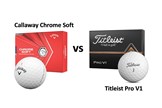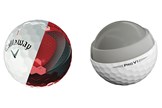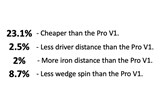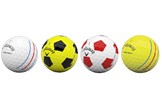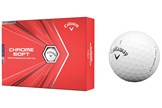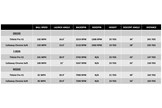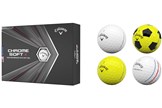Callaway Chrome Soft vs Titleist Pro V1 golf balls
Last updated:
The Callaway Chrome Soft and Chrome Soft X have been completely redesigned for 2020, with the Chrome Soft targeting sub 100mph swing speeds the Chrome Soft X goes after 105mph+ golfers.
To find out if both deliver we drafted in a 5 handicap club golfer to (test the Chrome Soft) and our regular TG Test Pro Neil Wain (to hit the Chrome Soft X) to put the new models up against the market-leading Titleist Pro V1 and Pro V1x.
RELATED: Revealed – The right golf ball for your game
Callaway Chrome Soft golf ball
It wasn’t that long ago the choice of golf balls for club golfers was pretty limited. Players who’d reached a reasonable standard and weren’t put off by the price plumped in their droves for the gold standard of golf balls, the urethane-covered Titleist Pro V1.
If that was out of reach, the choice came down to less expensive, harder surlyn and ionomer-covered balls that went a country mile but sounded and felt really harsh, especially on a cold, frosty morning. And it’s no secret distance balls drastically reduced feel and spin in the short game.
But the golf ball market has changed massively over the last few years. Direct to consumer tour-level urethane balls are now available at reduced costs and thanks to several brands making it their mission to break Titleist’s stranglehold on the premium ball market, lots of new ideas have evolved.
Plenty of that evolution has been aimed squarely at club golfers, as we buy (and lose!) the most balls. But also because tour balls aren’t typically optimised to perform at the “normal” swing speeds of amateurs.
RELATED: Best Premium Golf Balls
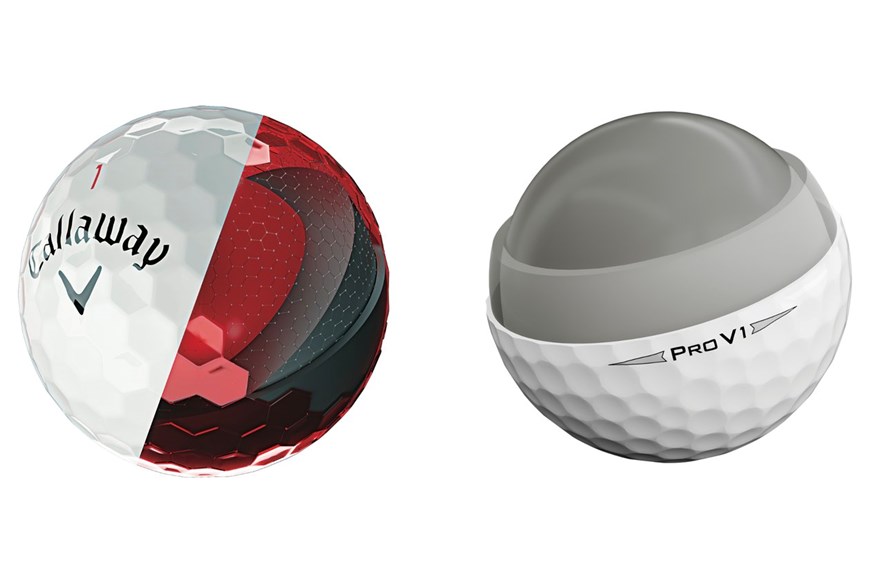
RELATED: Titleist TSi2 and TSi3 drivers reviewed
At the start of 2020 Callaway unveiled a brand new Chrome Soft ball, and they said it was designed specifically for club golfers with swing speeds under 100mph. To hit the spot the new Chrome Soft needed the same soft feel golfers had come to love. But also it had to combine great driver and iron distance, with good wedge spin, a sensible price and of course a urethane cover, the bit that used to elevate tour balls above the competition.
So to see how the Callaway Chrome Soft measures up and see if it can help you save on your ball budget without sacrificing anything in terms of performance, we put them in the hands of a five-handicap club golfer. This is what happened…
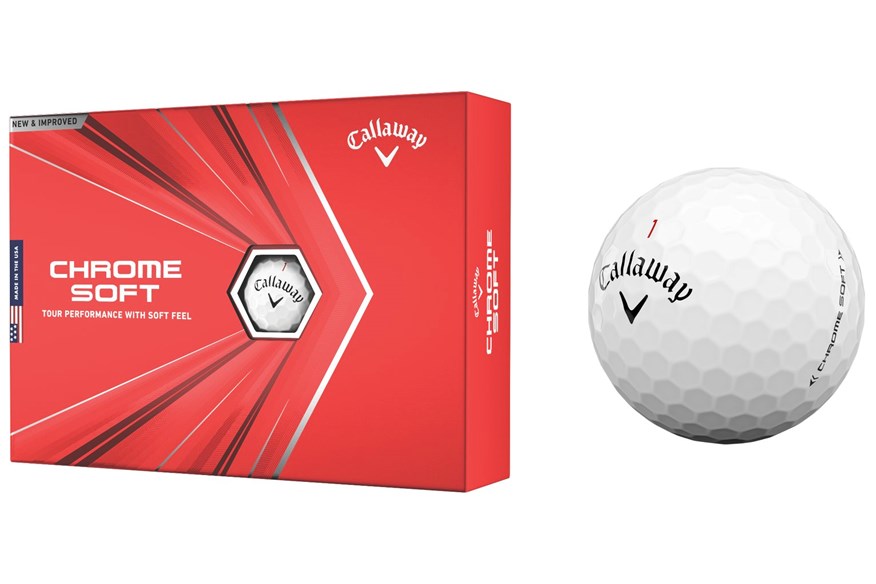
What you need to know about the Callaway Chrome Soft
RRP: £39.99
Construction: Four-piece
Cover: Urethane
Models: White, Yellow, Triple Track, Truvis.
Typical club golfers hit 20-25 iron and hybrid shots and 30 putts per round (as opposed to 10-14 drivers), so the Chrome Soft ball is designed to perform across the whole game while delivering soft feel and helping reduce the impact of typical club golfer accuracy inconsistencies.
Callaway say the standard ball performs well for golfers with swing speeds under 100mph.
RELATED: Tested – Wet vs Dry Golf Balls
Key numbers: Callaway Chrome Soft
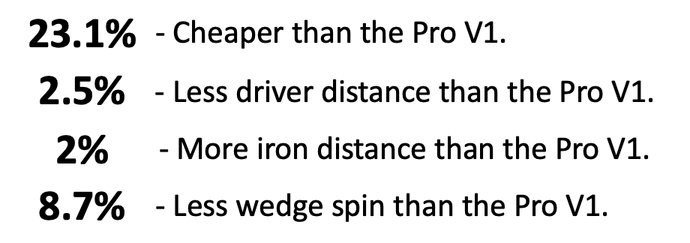
Verdict: Callaway Chrome Soft golf ball
The move Callaway have made with the Chrome Soft for 2020 is a very clever one. Giving a bigger performance gap between the standard and X ball clarifies brilliantly who each ball will perform best for. Make no mistake Chrome Soft is a tour ball, but it’s just been designed to work well for the more average swing speeds of club golfers.
RELATED: Srixon Q-Star Tour vs Titleist Pro V1 golf balls
Once your club speed gets above 100mph and certainly over 105mph you really should be looking at the brilliant new Chrome Soft X.
Callaway’s ‘strokes gained’ claims are supported by our data as it performs well across the board. First and foremost golfers get the soft, low compression feel they desire, as the Chrome Soft is about 13% softer than the Pro V1.That soft feel means giving up 2.5% of driver distance (6 yards), but then you’re gaining 2% on iron shots, which you hit more often, and you save £1 a ball (23.1%).
RELATED: Vice Golf vs Titleist Pro V1 golf balls
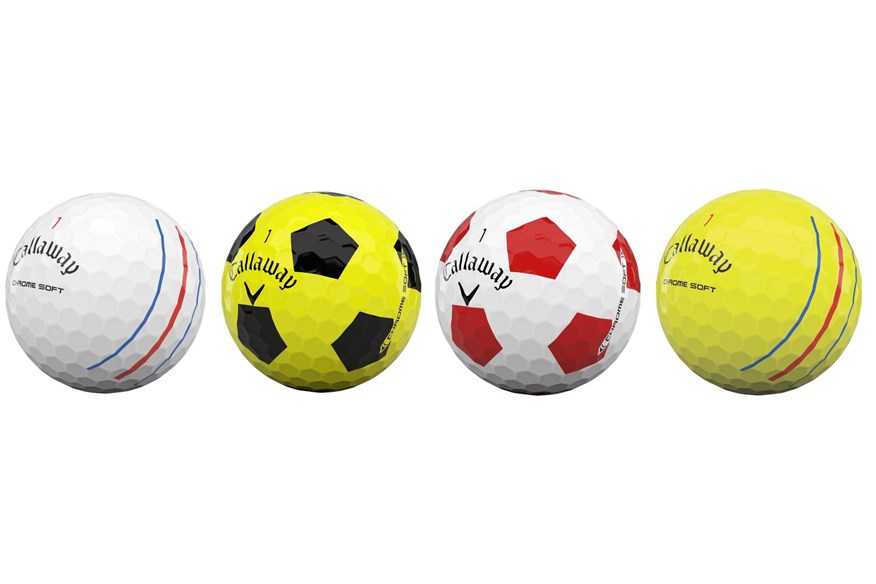
As Callaway say the softer Chrome Soft is more forgiving in terms of sidespin, our tester saw 23% less sidespin compared to the Pro V1, which will help accuracy for the target golfer. For those whose game evolves around wedge spin and control, our data suggests you give up 8.7% wedge spin; what you do get though is a higher ball flight and steeper descent which undoubtedly helps shots stick on the green.
If we were choosing a Chrome Soft we’d be opting for the Triple Track version, because you get all of the above performance plus the cost savings, but as we found out in our “alignment golf balls’ test, you’re also likely to hole 15% more six foot putts than an unmarked ball, too.
RELATED: Alignment Golf Balls Test
Data comparison: Callaway Chrome Soft vs. Titleist Pro V1
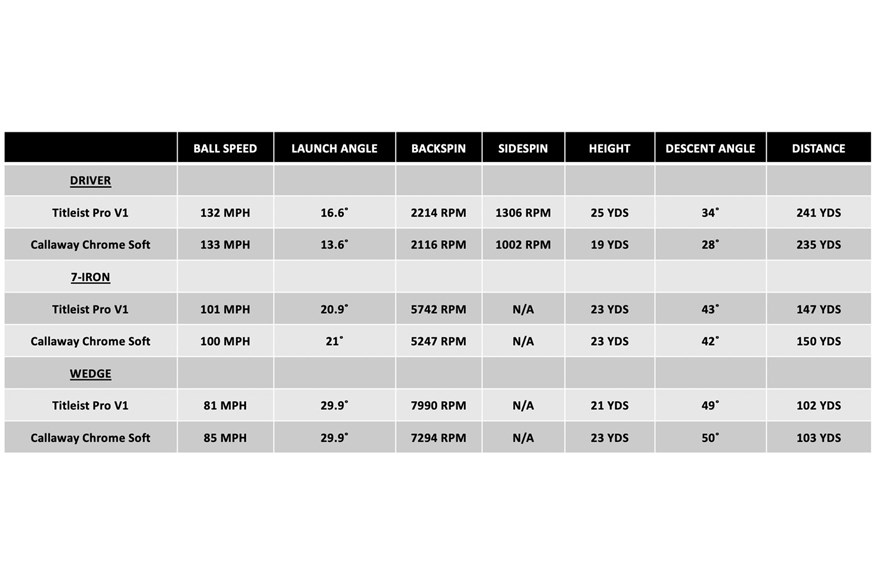
Callaway Chrome Soft X golf ball
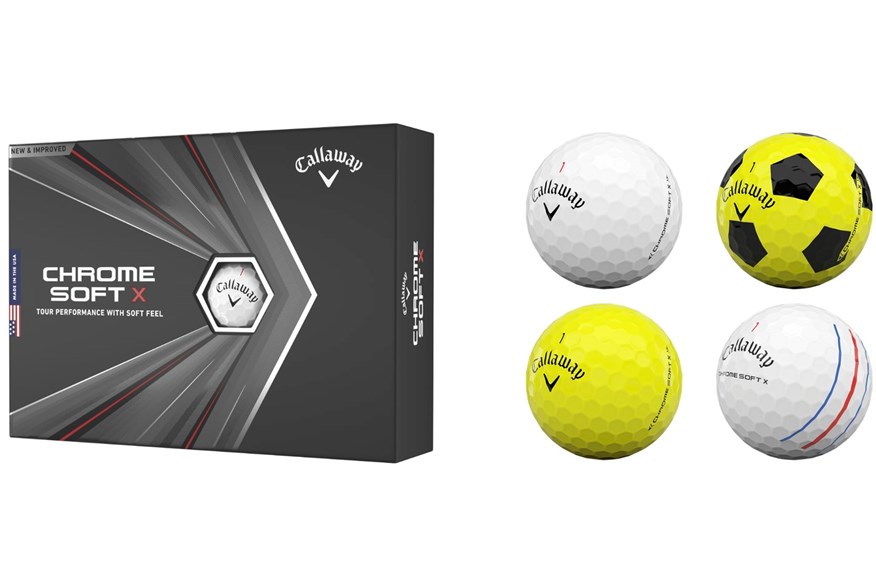
What you need to know about the Callaway Chrome Soft X
RRP: £39.99
Construction: Four-piece
Cover: Urethane
Models: White, Yellow, Triple Track, Truvis.
The Chrome Soft X is a very different golf ball to previous models, and Callaway say by targeting different swing speeds they’re able to have a bigger gap in performance between the X and the standard ball. The X has a 117% bigger core, it’s firmer, which allows the mantle layer to be softer, and unlike the standard ball there’s no graphene.
RELATED: TaylorMade Tour Response vs Titleist Pro V1 golf balls
The X ball is more focused on driver performance, so you get a lower more penetrating tour preferred ball flight. Callaway say you can expect to see a gain of 7 yards with the driver at 120mph swing speed (over previous models), whilst giving up zero feel or spin for iron play or in the short game. Both balls have different aerodynamics optimised for their target golfer.
RELATED: Best Drivers
Data comparison: Callaway Chrome Soft X vs Titleist Pro V1 and Pro V1x
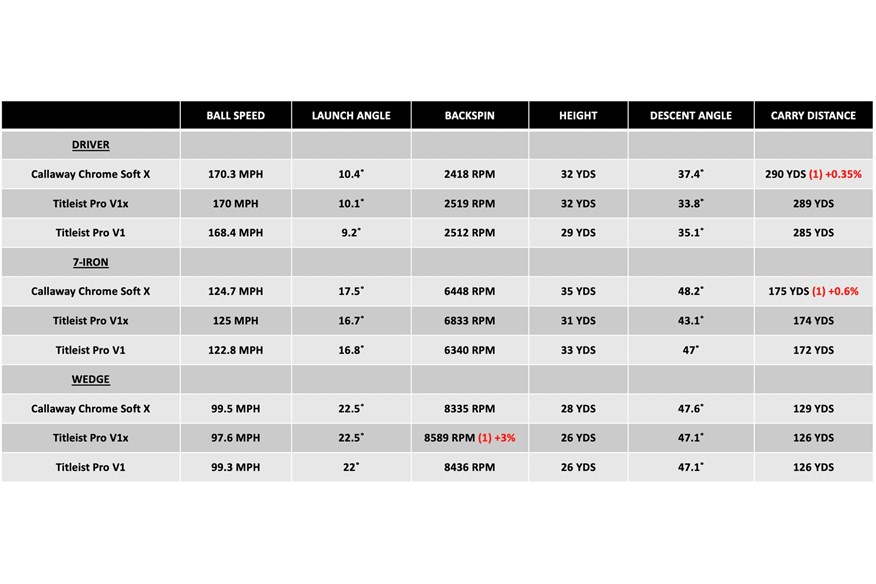
WATCH: Callaway Chrome Soft X vs Titleist Pro V1 and V1x
READ NEXT
Titleist Pro V1 2021 golf ball
Titleist Pro V1x 2021 golf ball

Review written by: Simon Daddow
Job title: Today’s Golfer – Equipment Editor
